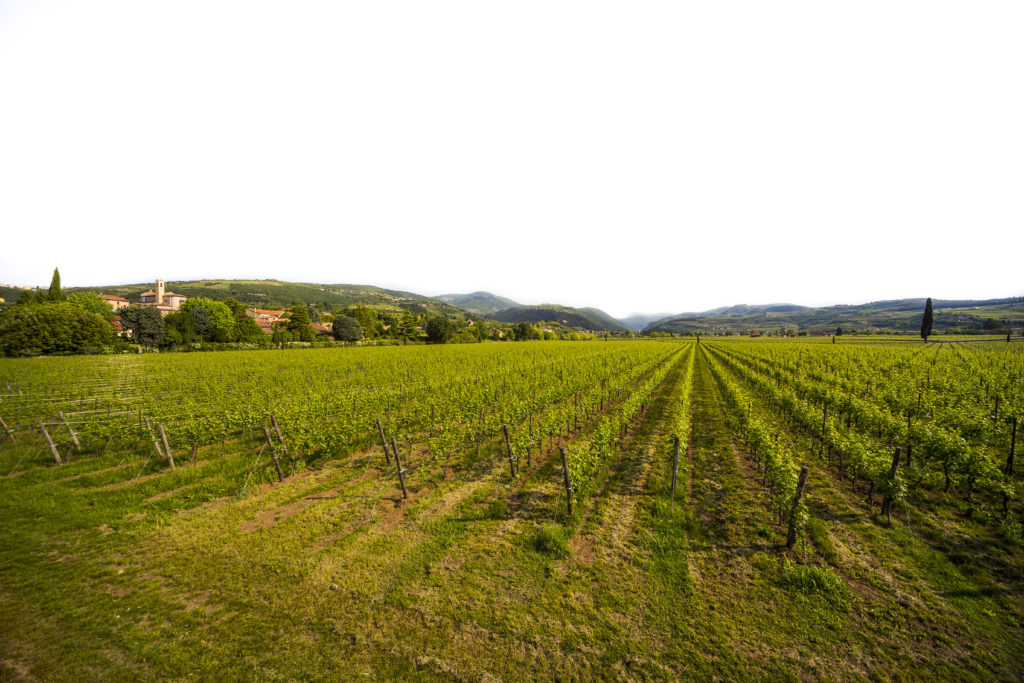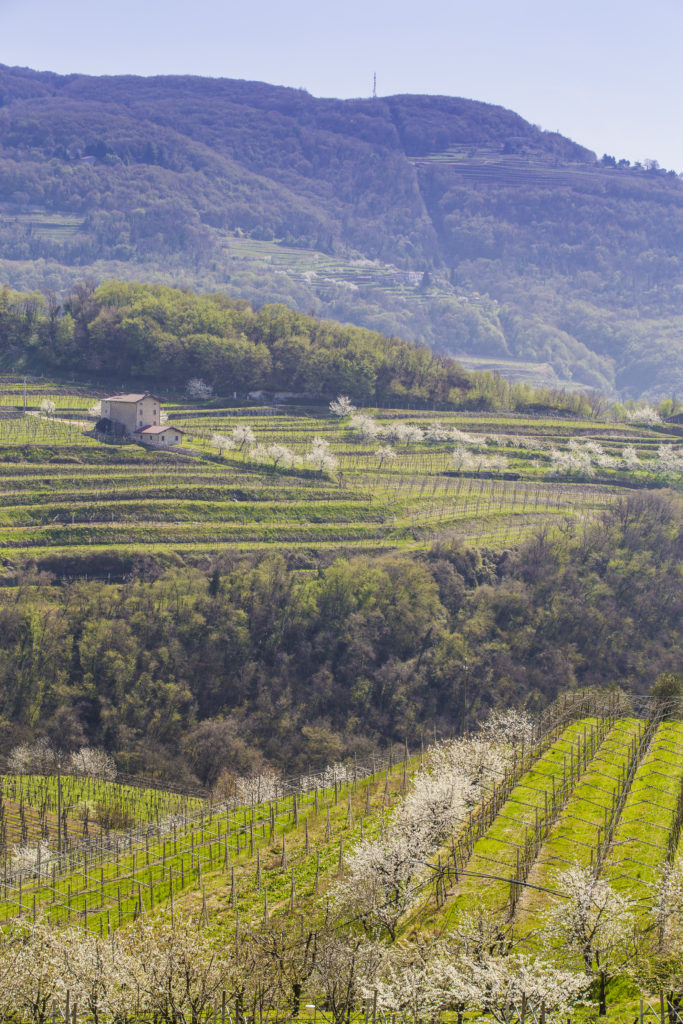Valpolicella is a premium wine region located in the province of Verona. Renowned for the production of the famous Amarone red wine, it is also associated with other red wines such as Valpolicella Superiore, Valpolicella Ripasso and Recioto della Valpolicella.
From a geographical point of view, Valpolicella is characterized by a strong heterogeneity of pedoclimatic conditions. Vineyards are widespread both in the plains and in the hills, with altitude ranging from 50 m a.s.l. up to 500 m a.s.l. This corresponds, among other things to a temperature difference of up to 4° C in summer.
Another important characteristic of Valpolicella lies in the grapes that are used to produce the local wines, which are for the most exclusively present in this area. Corvina, Corvinone and Rondinella, that are native of the region, are indeed the basis of Valpolicella wines ,with international varieties such as Cabernet sauvignon, Merlot, Sangiovese allowed only for a minor part of the final blend of Valpolicella wines.
Finally, the third and perhaps more important characteristic of Valpolicelle is the widespread use of post-harvest withering to achieve increased concentration of grape sugars, aromas and phenolics, representing a unique case of use of this technique for the production of dry red wines.
The impact of climate change
Climate change has been impacting significantly grape and wine production in Valpolicella, particularly in relationship to the increase of seasonal temperatures. While in the past achievement of appropriate levels of ripening was challenging, nowadays grapegrowers are facing anticipated harvest and high alcohol degrees. In the case of Amarone, which has to be produced with grapes withered for a defined period of time, this is posing specific problems as grapes are too high in sugars at the end of withering, resulting in difficult fermentation and alcohol levels above 16.5%.

Strategies to reduce its impact
Several actions are currently being put in place by producers, some with the support of the local Consorzio di Tutela and/or through research programs with local institutions.
One main focus has been the implementation of alternative protocols for the management of withering and fermentation, trying to reduce sugar content of the grapes as well as alcohol content of the wines.
Also, there has been a generalized interest towards higher altitude vineyards, which are characterized by lower ambient temperatures. This presents several challenges as conditions in certain vintages can still be not optimal for appropriate sugar ripeness, and logistics are more complicated due to severe slope in certain areas.
Finally, several actions of rediscovery of ancient grape varieties are in progress with the aim of re-introducing varieties that had been set aside in previous decades but might possess interesting characteristics in the context of climate change, such as drought tolerance, delayed maturity, high natural acidity and slow withering.

Article written by Prof. Maurizio Ugliano, Dept. of Biotechnology, University of Verona
Photo credits: Valpolicella Wine Route